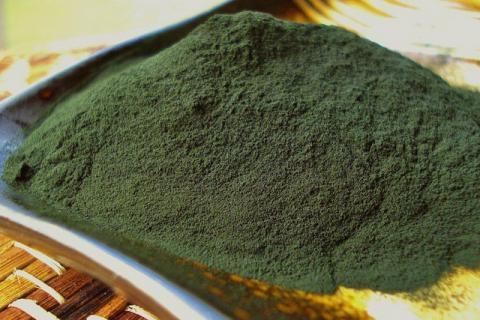
What is algae?
Scientifically, algae are aquatic organisms that thrive through photosynthesis. This includes a great number of organisms, but for our purposes, we’re going to focus on spirulina and chlorella.
What’s the difference between spirulina and chlorella?
Chlorella is a single-celled green algae made up of chlorophyll pigments (hence it’s bright green color.) Due to its incredibly fast reproduction rate, chlorella is a very sustainable food source.
Spirulina, on the other hand, is a multi-celled, blue-green microalgae; as such, it’s not actually an algae but a cyanobacteria. This makes it genetically different from the closely related chlorella, though closely related to seaweeds like kelp, dulse, and wakame.
What are the benefits of consuming spirulina and chlorella?
Chlorella is a cleanser because of its high amount of chlorophyll. Additionally, chlorella acts as a natural heavy metal detoxifier, binding to metals like uranium and mercury and removing them from the body. Chlorella is fairly high in protein, vitamin A, and iron, making it an especially good choice for vegans and vegetarians. With a bland taste compared to the stronger spirulina, chlorella can be easily blended into smoothies or simply chewed.
Spirulina, on the other hand, has a much stronger taste–some may find it especially similar to pond scum. To some, spirulina is the most nutrient-dense food on the planet, and with the high protein and nutrient content, it’s hard to disagree. Of particular interest to athletes, spirulina can increase endurance and decrease skeletal muscle damage due to exercise.
Where can I buy spirulina and chlorella?
Chlorella and spirulina can be purchased online or bought directly at natural health food stores. Be certain the brand you purchase is organic, as conventional algae can contain preservatives and pesticides.
How do I consume it?
Spirulina is generally found as a fine-ground powder, to be taken stirred into a glass of water. Beware that the hype is not unwarranted–you might think you really are drinking pond scum. High-quality capsule-forms do exist, so that is an option for those who can’t stand the taste. Chlorella comes in both forms, and can be better blended into smoothies without strongly affecting the taste of the drink.
Should I be cautious about taking spirulina or chlorella?
As with most supplements, it’s important to contact your healthcare practitioner prior to beginning a new regimen. Chlorella contains high amounts of iodine, so those who are cautioned to avoid iodine should not take chlorella. Additionally, high levels of vitamin K can affect those with blood clotting disorders. Spirulina acts similarly, and should be avoided by those taking anti-coagulation drugs. Neither algae is recommended for women pregnant or nursing.
Photo Credit: "Spirulina" by Summer Yarbrough is licensed under CC BY 2.0








